
Fine Classical, Instrumental, and Specialty Recordings
Label: Stradivarius Item Number: STR33859 Format: CD Year Recorded: 2008 Ferdinand Rebay: Guitar Sonatas SoloDuo Lorenzo Micheli - Guitar Matteo Mela - Guitar
SoloDuo - Two Guitars  As SoloDuo, Matteo Mela and Lorenzo Micheli have performed throughout Europe, Asia, the USA, Canada and Latin America, and have been acclaimed everywhere - from New York's Carnegie Hall to Seoul's Sejong Chamber Hall and Vienna's Konzerthaus - as one of the best ensembles ever heard. About one of their performances, The Washington Post wrote: "the duo's playing was nothing less than rapturous - profound and unforgettable musicianship of the highest order." In addition to classic, romantic and modern repertoire, Matteo and Lorenzo - joined by lutenist Massimo Lonardi - enjoy exploring the early literature for baroque guitar and theorbo. Together, Matteo and Lorenzo have recorded Francois de Fossa's Three Quartets, op. 19 (Stradivarius 2004), a CD of 17th century Italian music for baroque guitar, archlute and theorbo ("La Suave Melodia", Stradivarius 2008), "Solaria", an anthology of 20th century masterpieces for two guitars (Pomegranate 2007), the Duos Concertants by Antoine De Lhoyer (Naxos 2007), a collection of chamber works by Mauro Giuliani (Amadeus 2008), a collection of 19th century pieces for two guitars ("Noesis", Pomegranate 2009), the Sonatas of Ferdinand Rebay (Stradivarius 2010), the Arias and Cantatas of Alessandro Scarlatti (Stradivarius 2012) and the 24 Preludes and Fugues by Mario Castelnuovo-Tedesco (Solaria 2012), as well as a dozen solo recordings on the labels Naxos, Brilliant Records, Kookaburra, Mel Bay, and Stradivarius. Matteo resides in Geneva, Switzerland, where he teaches at the Conservatoire Populaire. Lorenzo lives in Milan, Italy, and teaches both at the CSI Conservatory in Lugano, Switzerland, and the Conservatory of Aosta, Italy. For further information, please visit www.soloduo.it, www.matteomela.it and www.lorenzomicheli.com Lorenzo Micheli - Guitar Matteo Mela - Guitar The first "modern" public performances of guitar works by Ferdinand Rebay date back to the late nineties, initiated by the guitarist Simon Wynberg and the oboist John Anderson. The first posthumous publications of Rebay's guitar music appeared two years later at Philomele Editions. During the following decade we assisted at a renaissance, enhanced by guitarists such as Christophe Ducret and Andrea Förderreuther. Finally, decisive impulses came from Matteo Mela and Lorenzo Micheli. The present situation is best described by the phrase "We are going to hear a lot more of Ferdinand Rebay". This blunt statement by Colin Cooper, which concludes the review of a concert by Mela and Micheli (Classical Guitar, October 2007), marks the end to half a century of oblivion and announces a late comer among the great 20th century guitar composers. The beginning of his career dawned rather promisingly. Rebay's father owned a music store in Vienna, and from an early age the young Ferdinand was taught both violin and piano. In 1890 he was accepted as a chorister at the Heiligenkreuz Abbey, where he was given a thourough musical education. By the end of his five-year stay, he had been appointed an alto soloist and sang for the Kaiser at the nearby Mayerling Castle. Rebay then switched to art studies and, aged twenty, graduated from the Art school of the Austrian Museum in Vienna. During this period he had taken up composition under the supervision of the scholar and Schubert connoisseur Eusebius Mandyczewski, and enjoyed his first success as a composer of songs and choral works. Mandyczewski was the driving force of the first complete Schubert edition, achieved in 1897 with Breitkopf & Härtel, and certainly transmitted to Rebay his admiration and encyclopedic knowledge of Schubert. In 1901 Rebay entered the piano class of Joseph Hofmann at the Vienna Conservatory and studied composition with Robert Fuchs, who counted Mahler, Wolf, Sibelius and von Zemlinsky among his students. Four years later, when leaving the Conservatory with a distinction in composition, Rebay's catalogue already numbered around 100 works. Rebay assumed the directorship of the Wiener Schubertbund, and the Wiener Chorverein, a position he held until 1920 when he was appointed Professor of piano at the Musikakademie. He continued to compose prolifically, mainly in the field of vocal music, producing around 100 choral works, 400 Lieder and two operas. After the Anschluss in 1938, Rebay lost his teaching positions and was reintegrated only in 1945, a few month before his definite retirement. Rebay's interest in writing for the guitar was triggered by his niece, the guitarist Gerta Hammerschmid (1906-1985). She and her teacher Jakob Ortner, Rebay's friend and colleague at the Musikakademie, probably introduced him to the technical possibilities of the instrument. From 1925, Rebay composed systematically for the guitar, accumulating a corpus of importance and quality that we are only beginning to become aware of. Rebay commented on his experience of writing for the guitar (í-sterreichische Gitarre Zeitung, 1, Wien, 1926): "[...] Having written a series of popular and art songs, I started composing duos for winds with guitar accompaniment. I noted with satisfaction that blending the timbre of an oboe or a clarinet with that of the guitar produces a sound by far more pleasant than the one resulting from the association of winds and piano. [...] With my guitar compositions going by far beyond the scope of other contemporary works, I intend, above all, to encourage my fellow composers." Although he was familiar with many of the major figures of the second Viennese school, Rebay's own works rarely stray from a romantic language and are based on a strong melodic invention. Popular and folkloric elements are incorporated into his writing, as well as antique formal structures such as suites, serenades, minuets, rondos and, frequently, the classic sonata form, neglected by the guitarists and discredited as "difficult". The listener is struck by the ample and generous conception of the works and Rebay's ability to write perfectly idiomatic parts for other instruments, from duos with guitar up to the septet for wind quintet and two guitars. Grosses Duo in a-moll The Grosses Duo in a-moll, dated from May 1940, bears no dedication. No fair copy version exists and we don't even know from posters or concert programs whether the Duo has been premiered or publicly played. The autograph, held at the Heiligenkreuz library, is a pencil-written draft, the full dynamic shadings and nuances, very acribic as usual, having already been added. The front page bears an annotation by Rebay: "nach einer Jugend-Klaviersonate" ("after an early piano Sonata"). The Grosses Duo is a unique piece: according to Roberto Brusotti (Musica, September 2007), it is situated simply at the top of the 20th century guitar duo repertoire. To convince yourself, it suffices to listen to the 1st movement, a complex, but perfectly calibrated 230 bar Sonata structure. The classic beauty of the second theme seems to be the result of a particularly happy inspiration. On this CD, Mela and Micheli play the original version, which employs a "Quint-Bassgitarre" as second guitar. Tuned a fifth lower, this bass guitar has by now become obsolete and is only rarely employed in plucked instrument orchestras. This raises an editorial problem: publishing the original version would necessarily be a commercial failure and would restrict access to this music to a small number of players able to find or to afford the construction of such an instrument. Therefore, Philomele Editions are preparing a version for two normal guitars, the second one having the 6th string tuned to D, which to some extent limits the number of necessary 8va transpositions. The slow central movement is a set of variations on a Lied by Schubert. "Morgengruss" is the Nr.8 of a famous cycle of 20 Lieder, "Die schöne Mullerin". In the story, the apprentice falls in love with the daughter of the miller, but she prefers a hunter, and our lad ends up drowning himself from despair in the millbrook. "Morgengruss" represents the turning point, where for the first time doubt becomes perceptible. This is expressed by the falling chromatic scale in the second part of the theme, in flagrant contrast to the triumphant certainty of the preceeding song, "Ungeduld" ("Impatience"). The last movement, "Frisch bewegt", though intended as a fast clean-out, displays again a complex structure within 320 bars, of symphonic dimensions, employing Sonata and Rondo elements. Kleine Variationen uber Schubert's Wiegenlied The sweet tune of the famous lullaby on a poem by Matthias Claudius (op. 98/2) breathes a more intimate atmosphere. The fourth variation, originally canceled by Rebay, was maintained in the recording. The following minor Variation, "fluchtig bewegt" is a restless and frightening climax recalling the gloomy atmosphere of the "Erlkönig", Sonate in a moll & Sonate in d moll The two Sonatas for guitar solo in A minor and in D-minor belong to a series of six large 3 and 4-movement Sonatas. The former starts with a spacious 1st theme, employed extensively in the development section to produce a series of sophisticated modulations. The slow movement, "Ruhig und zart", comes in Lied form, with a central tremolo section. It is followed by a rapid and rhythmically incisive Scherzo (lebhaft...) including a trio entitled "leisurely walz tempo". This setting, with a fast scherzo followed by a slower, walz-like trio is a sort of personal brand of Rebay which he often employs in his large scale solo and chamber works. The playful finale in Rondo form bears the indication "lustig bewegt". The concluding Sonata in D minor begins again with a classic Sonata movement. In the development section Rebay anticipates twice the theme of the following variation movement: the opening theme from Schubert's piano Sonata op. posth. D 960. Despite the un-guitaristic key of B flat major, Rebay beautifully reproduces the peaceful harmonies. Not even the alternance of major and minor, current in Schubert's late works, gives raise to some dissonances. Only the low-pitched trill, "the most uncanny trill in the history of music", as put by the Russian pianist Valery Affanasiev, represents an unmaterialized threat, soon calmed down again by Rebay's elegant Scherzo-presto and Trio-waltz setting, and followed by the finale "Rondo alla breve". Reviews of concerts including guitar music by Rebay during the 30s and 40s reported without exception a marked success. However, the number of concerts usually did not exceed 2-3 per year, and during the war they were geographically limited to Vienna. Only an insignificant number of works for solo guitar and for duo were printed during his lifetime. However now there is hope that the present Rebay renaissance, evidenced by 15 printed volumes, several CD's as well as performances at concerts around the world, has reached a level where in the end this composer will naturally occupy the position earned by him in the 20th century repertoire. Johann Gaitzsch, Geneva 2009 (translated by Richard Weber)
Label: Stradivarius Item Number: STR33859 Format: CD Year Recorded: 2008 This recording attempts to repair an historical injustice. Rebay, although popular as choir director and composer of vocal music, was unable to make a decent living for his family from his guitar compositions. At the time of his death in Vienna, in 1953, Rebay was impoverished and forgotten. "SoloDuo's Carnegie Hall concert was one of the more memorable concerts of the Weill season. It is hard to say what left more of an impression: their remarkable blend, their sublime artistry or their impeccable technique. Do not miss a chance to hear them." The New York Concert Review | |||||||||||||||||||||||||||||||||||||||||||||||||||||||||||||||||||||
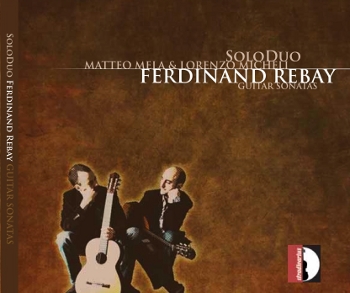
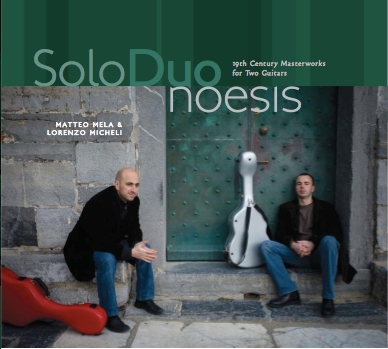
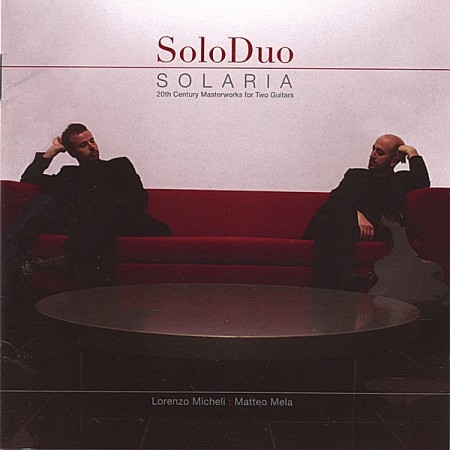
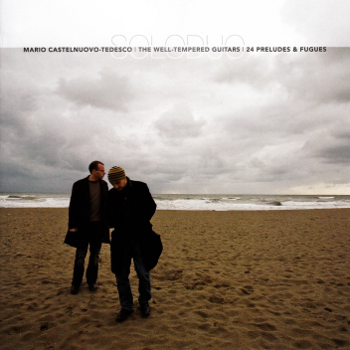
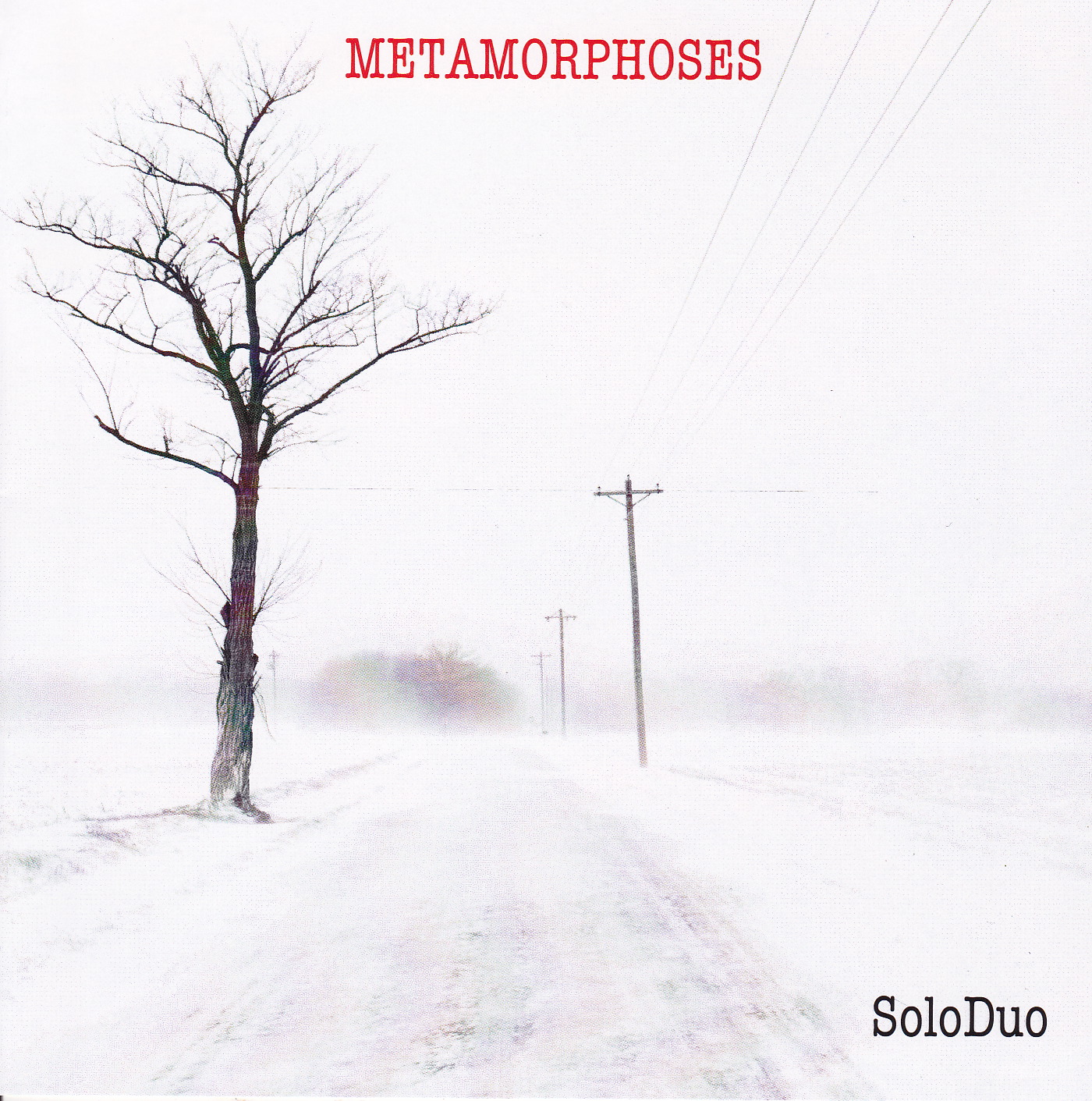
 Follow Us on Twitter
Follow Us on Twitter Follow Us on Instagram
Follow Us on Instagram Visit Our Partner Soundset Recordings
Visit Our Partner Soundset Recordings